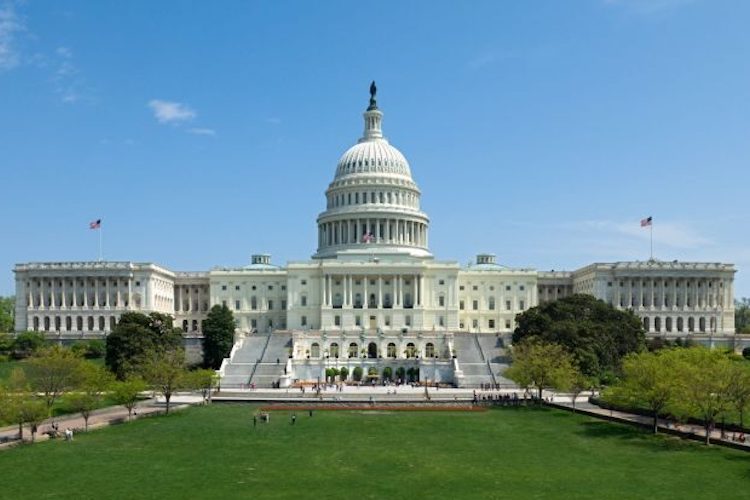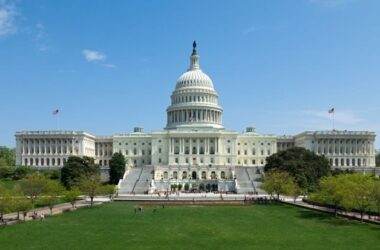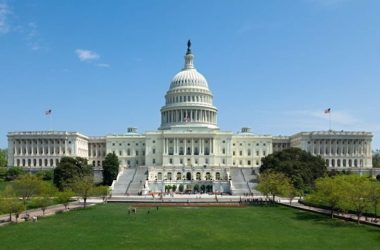Autumn Shelton, WV Press Association
CHARLESTON, W.Va. – Charlotte Lane, chairwoman of West Virginia’s Public Service Commission (PSC), on Tuesday, provided members of the legislative interim Joint Standing Committee on Technology and Infrastructure with an update on the PSC’s investigation into the state’s water utility fire hydrant practices.
According to Lane, the investigation was prompted following a fire that occurred in Charleston earlier this year.
“Because of an incident here in Charleston, and the publicity surrounding that, and the Governor saying that he would have the Legislature and the Public Service Commission look into the fire hydrant issue, we took it upon ourselves to conduct a survey on all the water utilities in the state,” Lane said.
On June 7, after discovering that fire hydrants failed to provide enough water for two devastating fires, WSAZ Reporter Curtis Johnson, during a media briefing, asked Gov. Jim Justice what his thoughts were on “having a hydrant so close to a home or workplace, only to hear firefighters say it won’t produce enough water to save it and put out a fire.”
Justice responded, “There’s no question whatsoever, that the Legislature, the Public Service Commission, whatever, ought to look into this. . . . We have very, very, very high water rates in West Virginia. It is preposterous. This is something like, I hate to say this because it sounds terrible, but this is something you’d see in a comedy, you know, where great firemen would run to a fire hydrant . . . and it wouldn’t work.”
Later that month, on June 30, the PSC issued a press release stating they had “initiated a general investigation to examine the maintenance and testing of fire hydrants.”
During Tuesday’s interim meeting, Lane presented the PSC’s findings.
She said that of the state’s 272 water utilities, 247 (or 90 percent) have responded to the PSC’s survey, which asked questions including how many fire hydrants they have, how old the hydrants are, how often they are inspected, what their maintenance practices are, and more.
“We are in the process of continuing to call the 25 that have not responded,” Lane continued. “We keep calling them and, so far, we haven’t gotten the information that we need from them.”
Additionally, Lane stated that:
- There are approximately 47,000 fire hydrants throughout the state.
- 43,000 hydrants are owned by utility companies.
- 2,000 hydrants are privately owned.
- 2,000 hydrants are on 4-inch lines, or smaller.
- 5,000 hydrants are more than 50 years old.
- 900 hydrants are more than 100 years old.
- 70 percent of the hydrants have been inspected within the last five years.
- 6,000 hydrants have been installed within the last 10 years.
- 44 percent of utilities have hydrant maintenance and inspection procedures.
- The replacement rate for new hydrants is 18 percent.
“Overall, I am pretty pleased with the response that we’ve had,” Lane said. “I know some of you may think that 90% rate is not good, but remember we are dealing with small water utilities who have small staffs, or sometimes no staff or volunteer staff, and some of these utilities have difficulty doing any type of paperwork. So, we continue to work with them and try to help them in any way we can.”
Lane stated that there is no “clear-cut” law on who is responsible for fire hydrants.
“Fire hydrants are not really a public utility, but we did this under our jurisdiction that we have over all water utilities,” Lane said. “But in looking at the gaps in the law, we do have some suggestions for legislation.”
Those suggestions included authorizing the PSC to adopt the National Fire Protection Association’s recommended practices for hydrant water flow testing and marking, to consider appropriating $3 million into a new Infrastructure and Jobs Development Council fund for the purpose of providing grants that would cover fire hydrant inspections and testing costs, and to consider appropriating $4 million into a fund for low or no interest loans to finance, repair and replace fire hydrants.
“To replace a fire hydrant, I’ve gotten estimates between five and 15,000 dollars, which small utilities, unless they have it built into their rates, can’t afford,” Lane said.
In response to questioning, from Del. Rick Hillenbrand, R-Hampshire, about additional fire hydrant inspection requirements for utilities, Lane responded that if the PSC is given jurisdiction in regulating fire hydrants, then they would ensure hydrants were inspected to meet national standards.
“The national standards are that the flow testing has to be done every three to five years, I think, and if they aren’t doing that, and we require them to do it, that would be additional work,” Lane said.
Sen. Mark Maynard, R-Wayne, asked if the Distressed and Failing Utilities Act of 2020 would help with fire hydrant maintenance. Lane responded that it would not.
“But, we are proceeding under that act, which was a really, really good act, because it gives us the ability to look at these small water utilities, and sewer utilities, that are having trouble functioning, and we have proceeded with several cases finding that they are failed or distressed and providing them help.”
Lane added that if utility companies do not have enough funding to complete fire hydrant inspections, then they may have to raise consumer rates.
“I was reluctant to go that route if the Legislature decided to put some money aside to deal with this issue,” Lane stated.
Lastly, Lane said legislation she hopes will be considered in the upcoming session will include allowing the PSC to hold all evidentiary hearings on distressed and failing utilities in Charleston, with consumers participating remotely, and to require a 200-day time limit on all distressed and failing utility proceedings.
She said this will prevent all parties from “stringing out the process.”
“We think that will speed up the process, because so many of the utilities we are having these hearings on, the people are not getting potable water. They are having to pay their water bill and haul water, or buy bottled water. So, the faster we can get some resolution, the better off they will be,” Lane concluded.



